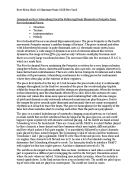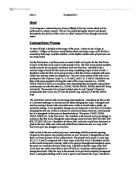Indian Musical Instruments
Indian Musical Instruments Tabla: a pair of finger-played kettledrums, the main accompanying instruments in the classical music of the northern Indian sub-continent, with an extremely elaborate technique. The right-hand drum, tabla, a cylindrical kettledrum made of hollowed wood, is tuned to the tonic of the raga; the left-hand drum, baya, a metal or occasionally pottery bowl, is untuned, the pitch being controlled by pressure with the heel of the hand in performance. Both have a patch of tuning paste on the drumhead to eliminate the out-of-tune overtones so audible on European drums. Sitar: one of the most important musical instruments of the classical music of the northern Indian sub-continent, a long-necked lute with four main plucked strings and three plucked as a rhythmic drone; twelve sympathetic strings are plucked occasionally. The strings can be pulled sideways along the curved metal frets, varying the pitch up to a fifth. The strings vibrate on a flat area of the bridge, which enriches the sound. A bass sitar, the surbahar, is also often used. The sitar was created as a conflation of the Persian setar and the Indian vina. Sarangi: a musical instrument, the principal fiddle of north Indian classical music. The body, carved from a block of wood, has a skin belly. The three bowed gut strings are stopped with a fingernail from the side, often with a glissando from
Moon children
Moon


















